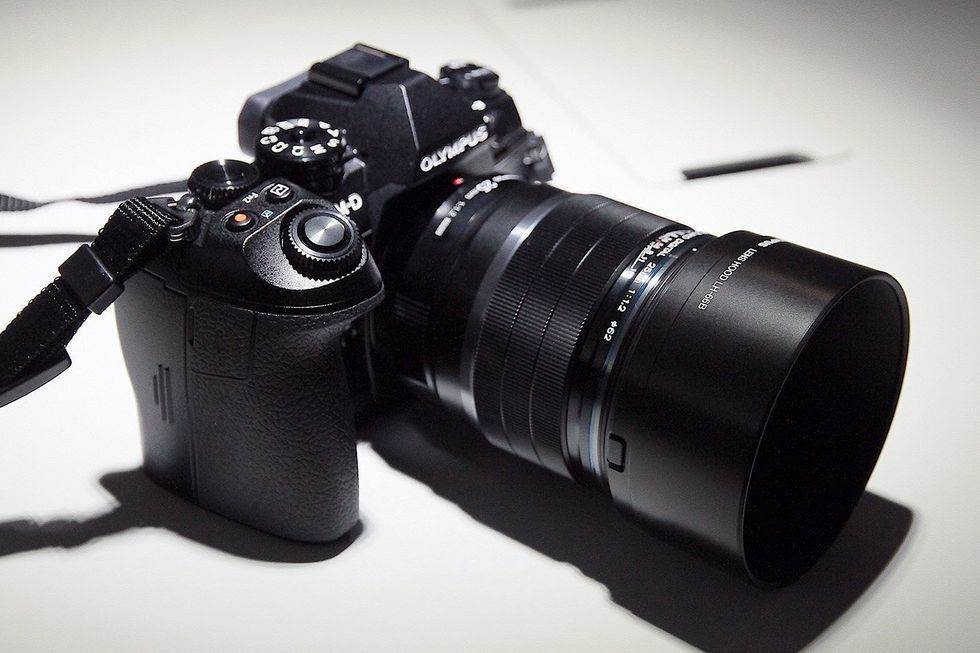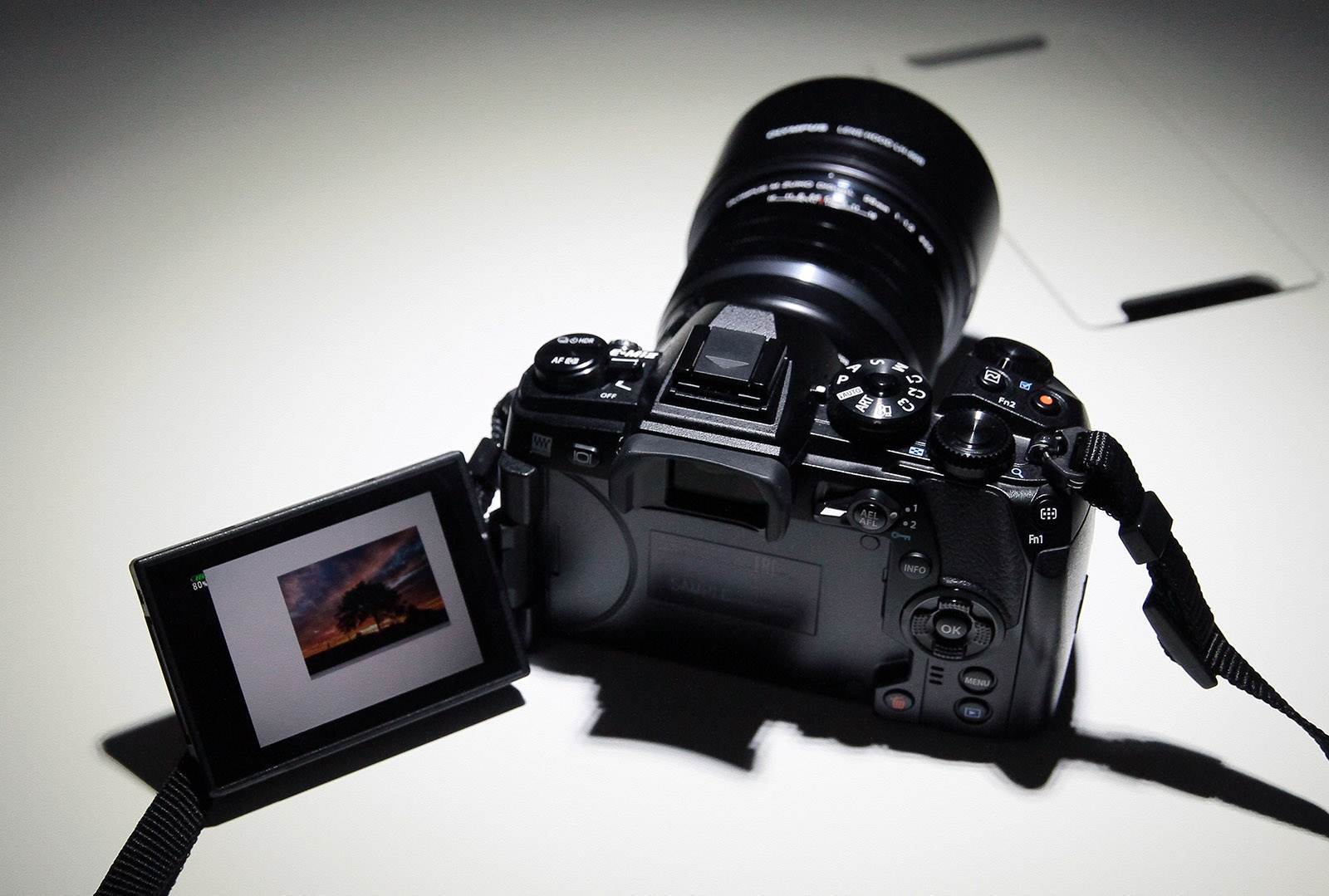Is Olympus hampered by its micro four-thirds sensor when mirrorless rivals have APS-C and Fujifilm just launched a medium-format camera? I had a look at the company’s new OMD-EM1 Mark II flagship during Photokina, and the company is doing its best to prove it’s not. By marrying a brand-new 20.4 megapixel sensor to a dual quad-core TruePic VIII image processor, Olympus has made a blazingly quick camera. Combined with a new 121-point phase detection AF system, It can shoot 18 RAW frames per second in continuous autofocus and exposure mode, and a crazy 60 fps with those locked off.
Gallery: First look at the Olympus OMD-EM1 Mark II mirrorless camera | 12 Photos

-

-

-

-
 +8
+8
During my admittedly brief tests with the prototype (under controlled conditions), it was able to sustain that 18fps rate for a good 5-10 seconds before it started to slow down. It was then ready to fire again after a brief rest, thanks to the UHS-II card’s nearly 300 MB/s throughput. Photo transfers should be equally quick with the USB 3.0 Type C bus. That kind of speed may tempt news, sports and wildlife photographers who would normally turn their noses up at a micro four-thirds sensor.
The OMD-EM1 II isn’t the lightest mirrorless camera I’ve tried, but it’s a feather compared to any flagship DSLR — another plus workaday photographers. Purists may decry the lack of an optical viewfinder, but the 2.36 million dot EVF has a minimal 6 millisecond delay and very smooth 120fps frame rate. During a brief test, it was just as good as an OVF for focus (if not better), to my eyes. Olympus also redesigned the grip for better handling, and, combined with the sturdy build quality, the camera feels very, very good.

Olympus is finally getting its act together with video, too. The OMD-EM1 Ii has 4K, 30fps video at up to 237 Mbps speeds, and the fast sensor readout significantly reduces rolling shutter, the company claims. Like Panasonic’s GH4, it also supports “Cinema 4K” at 4,096 x 2,160 resolution, compared to regular 4K (3,840 x 2,160). Video is processed internally at 4:2:2 for better colors, and can be output cleanly through the HDMI port to an external recorder.
Olympus also unveiled a battery grip, lenses and other accessories. The 25mm f/1.2 lens will give photographers a fast lens option for low-light, and a wafer-thing focus plane for artistic bokeh shots.
Given the limited time I had with it, the OMD-EM1 Mark II looks like a great flagship. However, Olympus is still battling the mindset that a micro four-thirds sensor is too small for the job. Its toughest rivals, Sony and Fujifilm, also make cameras that shoot fast and do 4K video, but pack larger APS-C sensors. And by launching a medium-format mirrorless camera, Fujifilm is telling serious shooters that even full-frame sensors aren’t big enough.
If the image quality of the OMD-EM1 II matches the speed and specs, Olympus may convince some pros, and serious amateurs, however. That might depend on the price, which we still don’t know, but the original OMD-EM1 ran $1,400. It should arrive before the end of the year.
We’re live all week from Cologne, Germany, for Photokina 2016. Click here to catch up on all the news from the show.


![[Video] An Exclusive Look at Galaxy XR With the Engineers](https://loginby.com/itnews/wp-content/uploads/2025/10/Video-An-Exclusive-Look-at-Galaxy-XR-With-the-Engineers-238x178.jpg)



![[CES 2026] Quest For Perfect Color…Samsung To Push](https://loginby.com/itnews/wp-content/uploads/2025/12/CES-2026-Quest-For-Perfect-Color…Samsung-To-Push-100x75.jpg)
